Renjie Zhou
Enhanced Multimodal Aspect-Based Sentiment Analysis by LLM-Generated Rationales
May 20, 2025Abstract:There has been growing interest in Multimodal Aspect-Based Sentiment Analysis (MABSA) in recent years. Existing methods predominantly rely on pre-trained small language models (SLMs) to collect information related to aspects and sentiments from both image and text, with an aim to align these two modalities. However, small SLMs possess limited capacity and knowledge, often resulting in inaccurate identification of meaning, aspects, sentiments, and their interconnections in textual and visual data. On the other hand, Large language models (LLMs) have shown exceptional capabilities in various tasks by effectively exploring fine-grained information in multimodal data. However, some studies indicate that LLMs still fall short compared to fine-tuned small models in the field of ABSA. Based on these findings, we propose a novel framework, termed LRSA, which combines the decision-making capabilities of SLMs with additional information provided by LLMs for MABSA. Specifically, we inject explanations generated by LLMs as rationales into SLMs and employ a dual cross-attention mechanism for enhancing feature interaction and fusion, thereby augmenting the SLMs' ability to identify aspects and sentiments. We evaluated our method using two baseline models, numerous experiments highlight the superiority of our approach on three widely-used benchmarks, indicating its generalizability and applicability to most pre-trained models for MABSA.
On the use of deep learning for phase recovery
Aug 02, 2023Abstract:Phase recovery (PR) refers to calculating the phase of the light field from its intensity measurements. As exemplified from quantitative phase imaging and coherent diffraction imaging to adaptive optics, PR is essential for reconstructing the refractive index distribution or topography of an object and correcting the aberration of an imaging system. In recent years, deep learning (DL), often implemented through deep neural networks, has provided unprecedented support for computational imaging, leading to more efficient solutions for various PR problems. In this review, we first briefly introduce conventional methods for PR. Then, we review how DL provides support for PR from the following three stages, namely, pre-processing, in-processing, and post-processing. We also review how DL is used in phase image processing. Finally, we summarize the work in DL for PR and outlook on how to better use DL to improve the reliability and efficiency in PR. Furthermore, we present a live-updating resource (https://github.com/kqwang/phase-recovery) for readers to learn more about PR.
High-performance real-world optical computing trained by in situ model-free optimization
Jul 22, 2023
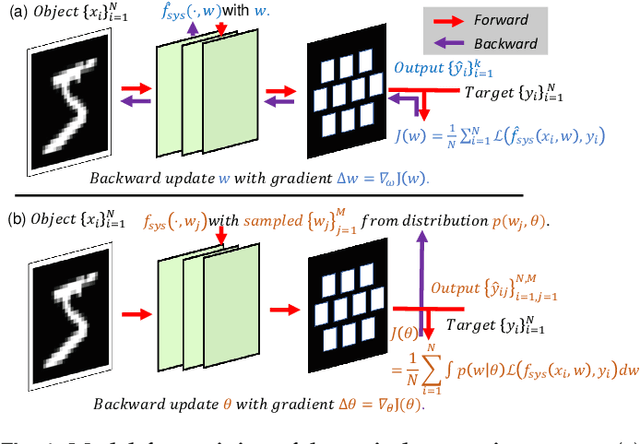
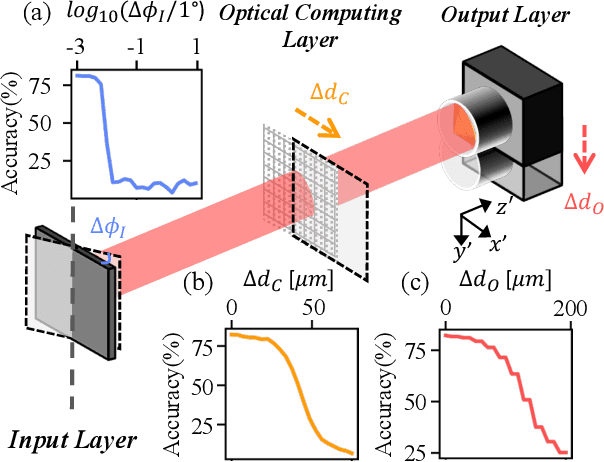
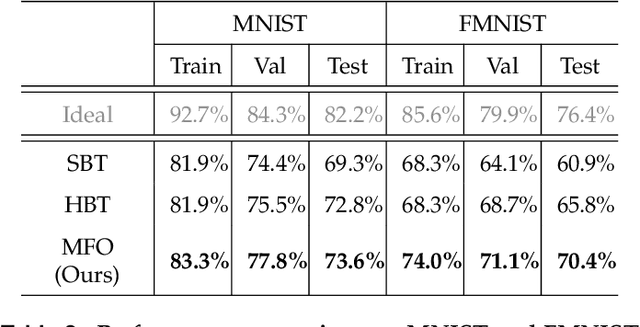
Abstract:Optical computing systems can provide high-speed and low-energy data processing but face deficiencies in computationally demanding training and simulation-to-reality gap. We propose a model-free solution for lightweight in situ optimization of optical computing systems based on the score gradient estimation algorithm. This approach treats the system as a black box and back-propagates loss directly to the optical weights' probabilistic distributions, hence circumventing the need for computation-heavy and biased system simulation. We demonstrate a superior classification accuracy on the MNIST and FMNIST datasets through experiments on a single-layer diffractive optical computing system. Furthermore, we show its potential for image-free and high-speed cell analysis. The inherent simplicity of our proposed method, combined with its low demand for computational resources, expedites the transition of optical computing from laboratory demonstrations to real-world applications.
NAS-PRNet: Neural Architecture Search generated Phase Retrieval Net for Off-axis Quantitative Phase Imaging
Oct 25, 2022Abstract:Single neural networks have achieved simultaneous phase retrieval with aberration compensation and phase unwrapping in off-axis Quantitative Phase Imaging (QPI). However, when designing the phase retrieval neural network architecture, the trade-off between computation latency and accuracy has been largely neglected. Here, we propose Neural Architecture Search (NAS) generated Phase Retrieval Net (NAS-PRNet), which is an encoder-decoder style neural network, automatically found from a large neural network architecture search space. The NAS scheme in NAS-PRNet is modified from SparseMask, in which the learning of skip connections between the encoder and the decoder is formulated as a differentiable NAS problem, and the gradient decent is applied to efficiently search the optimal skip connections. Using MobileNet-v2 as the encoder and a synthesized loss that incorporates phase reconstruction and network sparsity losses, NAS-PRNet has realized fast and accurate phase retrieval of biological cells. When tested on a cell dataset, NAS-PRNet has achieved a Peak Signal-to-Noise Ratio (PSNR) of 36.1 dB, outperforming the widely used U-Net and original SparseMask-generated neural network. Notably, the computation latency of NAS-PRNet is only 31 ms which is 12 times less than U-Net. Moreover, the connectivity scheme in NAS-PRNet, identified from one off-axis QPI system, can be well fitted to another with different fringe patterns.
WCL-BBCD: A Contrastive Learning and Knowledge Graph Approach to Named Entity Recognition
Mar 14, 2022
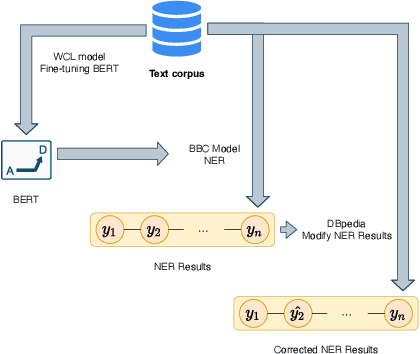
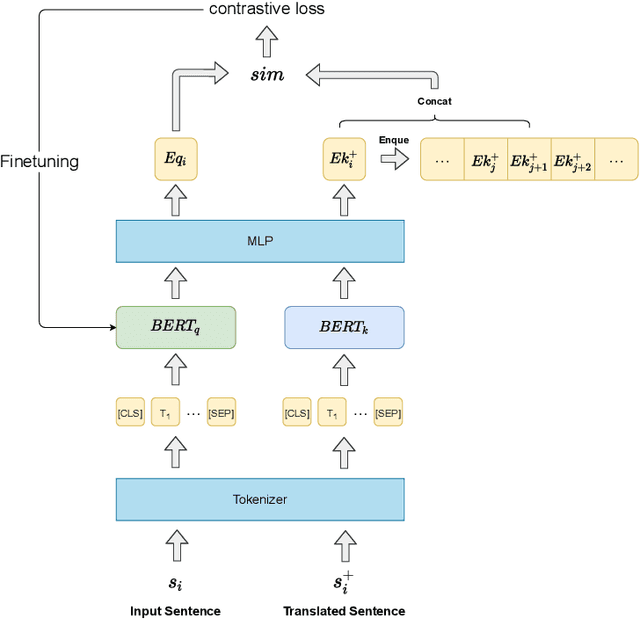
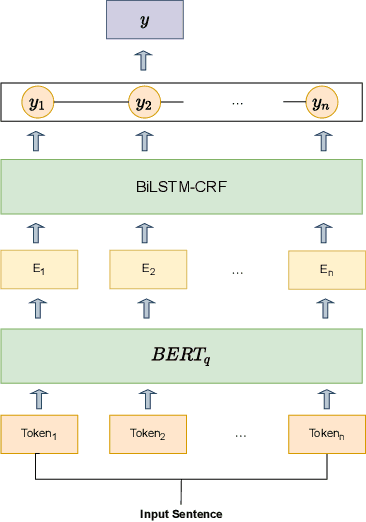
Abstract:Named Entity Recognition task is one of the core tasks of information extraction.Word ambiguity and word abbreviation are important reasons for the low recognition rate of named entities. In this paper, we propose a novel named entity recognition model WCL-BBCD (Word Contrastive Learning with BERT-BiLSTM-CRF-DBpedia) incorporating the idea of contrastive learning. The model first trains the sentence pairs in the text, calculate similarity between words in sentence pairs by cosine similarity, and fine-tunes the BERT model used for the named entity recognition task through the similarity, so as to alleviate word ambiguity. Then, the fine-tuned BERT model is combined with the BiLSTM-CRF model to perform the named entity recognition task. Finally, the recognition results are corrected in combination with prior knowledge such as knowledge graphs, so as to alleviate the recognition caused by word abbreviations low-rate problem. Experimental results show that our model outperforms other similar model methods on the CoNLL-2003 English dataset and OntoNotes V5 English dataset.
 Add to Chrome
Add to Chrome Add to Firefox
Add to Firefox Add to Edge
Add to Edge